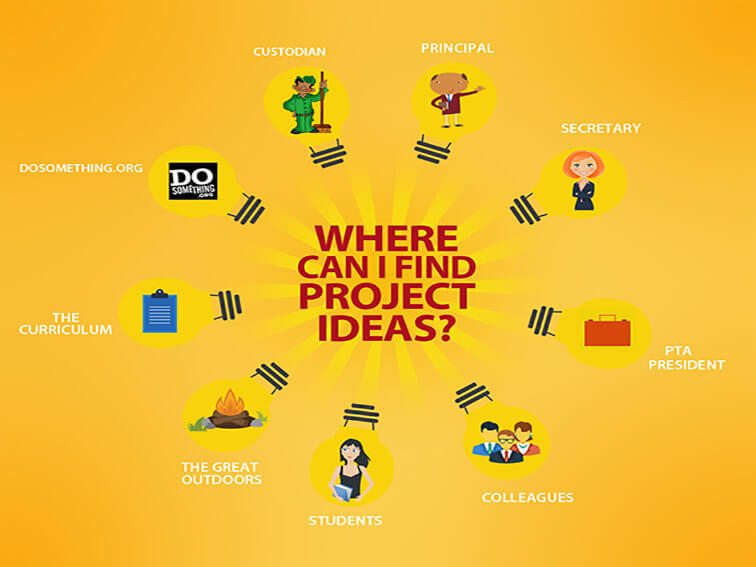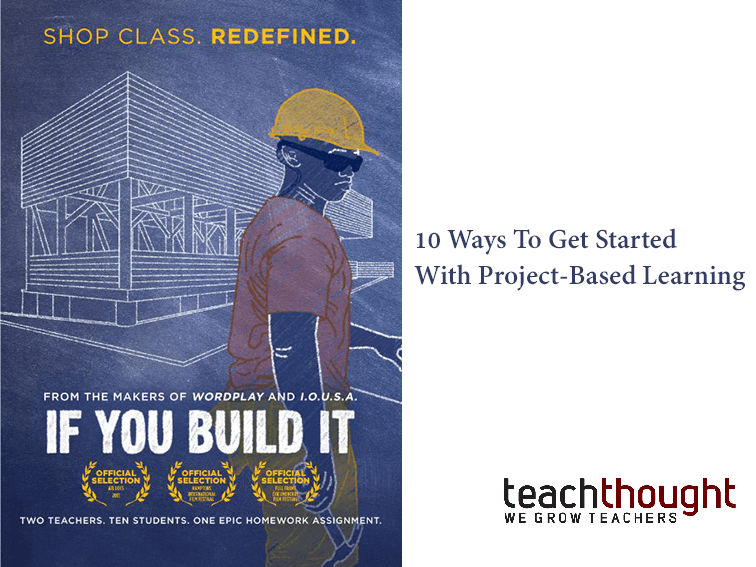
Start Your Next Project-Based Learning Unit With These 10 Conversations
contributed by John Otterstedt
In the world of project-based learning, the big projects get the headlines. That point was reaffirmed to me this weekend when I was swept up in the 2013 documentary ‘If You Build It.’
As I watched a group of midwestern students construct a farmer’s market pavilion backed by over $100,000 in grants and the guidance of two architects, I felt a feeling of despair creep over me. The project on the screen seemed too big, too far-reaching for a guy like me. Perhaps I wasn’t cut out for this project-based learning thing.
See also A Better List Of Ideas For Project-Based Learning
It was a familiar thought. I remember letting my mind wander into this territory after reading Steven Levy’s incredible book, Starting From Scratch, years ago. Levy is the nationally recognized educator who literally had his students build his classroom from scratch – starting with the desks. The book remains one of my favorites, but at the same time, it left me with this feeling that project-based learning was for “other people.”
Let’s face it, the type of projects featured in If you Build it and Starting From Scratch need resources not readily available to the average teacher. They require input and permission from administrators and, in the case of If You Build It, the local board of education. Both projects had a one-off feel to it, and when you take the resources necessary to pull them off into consideration, one might come to the conclusion that project-based learning is too high reaching of a goal.
Starting Small in Project-Based Learning
Yet I only have to look back at my past experiences with project-based learning in my classroom to realize that my fears are unfounded. If I can resist the urge to compare my projects with those highlighted in the documentary and book, I can appreciate them for the authentic, student-centered activities that they were.
There was the time when a substitute teacher exhaled and lamented the fact that he could never find any of the classrooms in the school. Within minutes, we were plotting and planning a new-and-improved map that would help guest teachers navigate the hallways. Over the course of the week, we explored the school, studied map skills, and used technology to create a document that has helped hundreds of people navigate our twisting corridors.
Another time, in the midst of a unit of study on water, a student complained that the mulch on the playground was washed out after every storm. Moments later, we were brainstorming ways to remedy the situation. After hours of research and an in-person meeting with a soil conservation expert, we met with the principal and recommended a course of action. Our diligence resulted in the building of several retaining walls and soil erosion structures.
If you are intrigued with the idea of project-based learning (or a project-based learning cheat sheet), the key is to start small. As they say in the business start-up world, scratch an itch. What is the itch – that annoying little issue – that needs to be scratched? What is your classroom’s version of the washed out mulch? What is your school’s version of the substitute teacher who has trouble navigating the hallways?
While many of the most publicized projects address needs in the community, one method of finding a manageable first project is to look as close to the walls of your classroom as possible. The key is to promote an atmosphere of inquiry where the students are always evaluating their surroundings and asking good questions. With that mindset in place, project ideas tend to flow.
But if they don’t, consider the following.

10 Conversations That Can Start Your Next Project-Based Learning Unit
1. Talk with students about their life
Their passions, gifts, challenges, families, communities, interests, physical and emotional well-being, etc.
2. Talk to parents about students and students about parents
3. Interview the principal, secretary, or custodian
Your principal interacts with everyone in the school. That gives them a bird’s eye view of the issues that affect different stakeholders. What are the complaints that most commonly come across their desk? Is there an issue that a bright, motivated group of students could address?
The first line of defense in the school is often the secretary. Like the principal, they have a strong sense of the issues that most often affect the flow of each day. If one of those issues fits within the confines of your curriculum, you might have the source of a great project.
And if you have ever spent some time in the custodian’s office, odds are you have heard a litany of complaints. Earlier this year, in a casual exchange with our school custodian, she mentioned her frustration with the way the school collected and sorted recyclables. Remedying the school’s recycling program would have made an excellent project for a grade level that could make a curricular connection.
4. Discuss school issues with colleagues or interview the PTA president
Like other stakeholders in a school community, teachers have a strong sense of initiatives that would help take the school to the next level. Furthermore, they are often one step ahead, already plotting and planning special projects and events.
By listening to teachers share their ideas at faculty meetings and informal gatherings, you can often find ideas you can piggyback on. In a recent faculty meeting, a conversation about the school’s 50th anniversary gave rise to several exciting projects where students researched the year in which the school was built and shared their research in stunning, visual displays.
One of the best ways to gauge the concerns of the parent community is to go to the person most connected to them – the PTA president. This person often has her finger on the pulse of the community as a whole, too. Perhaps he or she can help you find a place for your students in an upcoming fundraiser or school event.
5. Survey and analyze current events and social conflict.
6. Ask students to brainstorm together
Children in a student-centered classroom are quick to share their thoughts. This includes their honest criticism of programs and procedures. You can often find an idea for a project nestled in constructive criticism.
If the suggestions aren’t flowing organically, don’t hesitate to pose questions and mine the responses for project ideas. The questions can center on school events and policies, or they can focus on distinct elements of a unit of study.
8. Look outside the window. Literally.
The area right outside your classroom window can often provide fodder for countless projects. A sickly tree can spur a “Save the Tree!” project where the students conduct research and speak to local experts in an effort to determine how to nurse it back to health. A single rock can ignite an exploration into the types of rocks most commonly found in the area.
9. Comb through curriculum and materials
As the person most familiar with the content and curriculum, you are in a great position to review the materials and brainstorm burning questions and project ideas. Look for connections between the content and the world just outside your classroom.
Anticipate questions that the students might have as they grapple with the material.
10. Dosomething.org
Similar to #5, dosomething.org is a fantastic resource for real-world project-based learning. Combine with problem-based or place-based education, and watch students blossom.
Standards-Based Teaching In A PBL Setting
Don’t let a fear of the curriculum dissuade you. Over the past 20 years, I have yet to find a project that couldn’t be molded into a series of curriculum-aligned activities. Particularly in an elementary setting, where a teacher has a smorgasbord of subject areas and curriculum objectives in front of her, finding links to the curriculum is rarely as hard as it seems.
If you are feeling pressure from above to follow a set scope and sequence, don’t fear. Project-based learning need not replace your normal lineup of lessons. A project can last as little as one day. When the kids are engaged, you will be surprised how much more efficiently time will be used, or how much they will be willing to do during their free time.
Start small. Scratch an itch. Leave those bigger projects for another year.
10 Conversations That Can Start Your Next Project-Based Learning Unit
